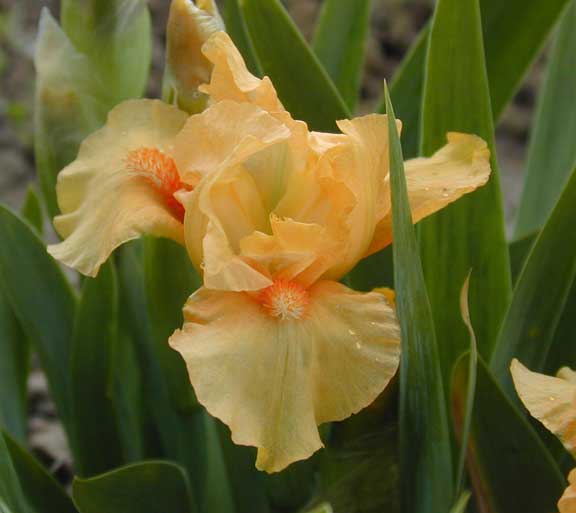Here is a photo of Infanta, SDB Marky Smith 2003. This is a great
example of a glaciata, light orange self. Note the smooth even clear
colour. No lines or haft marks. When you see darker lines on a
cartenoid or white flower this tells you that anthocyanin is present,
even though in a small amount. This very faint anthocyanin combines
visually with catrenoid pigments to produce slightly darker colours in
veins. Sometimes this colour is only seen at hafts or at base of
flower. A trick is to pull off a fall and look for these vein marks.
When present, you don't have a glaciata.
As glaciata is an allele of plicata it will almost always result from
a cross of two plicata parents. One of these plicata parents may be a
glaciata. If you cross a plicata to a non plicata, the non plicata may
carry plicata genes and produce a glaciata. In these cases you will
also have one out of six seedlings being a plicata. So if no other
seedlings in a cross is a plicata, then very unlikely to be a glaciata.
Of course the final test is to cross that suspected glaciata to a
plicata. All of the seedlings will be plicata. Some of these plicatas
may be glaciata. The ratios have to fit the results according to
predicted ratios. For more details on these ratios look in The World
of Irises.
Chuck Chapman


